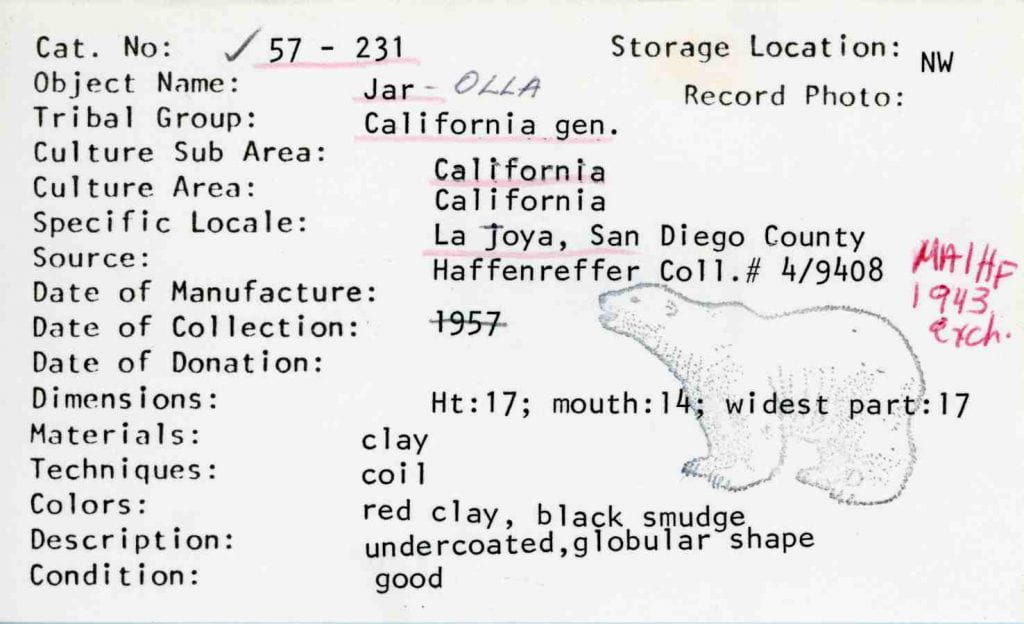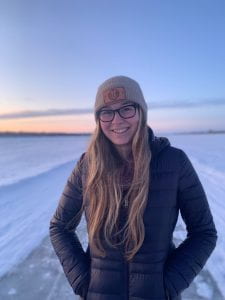Reflections on the Archaeological Collection
Alisa Caira, Class of 2022.5, Collection Assistant for Engaging the Americas
I have been incredibly grateful to serve as an Archaeological Collections Assistant with the Haffenreffer Museum. At the Haffenreffer’s site in Bristol, a winding road leads to the facility where so many fascinating objects are stored. The first time I entered, I was amazed not only by the impressive variety of the collection, but also by the careful organization and care given every object. I have not yet had the chance to see all of them, but I hope to one day accomplish that impressive feat.
Recently, I have been focusing specifically on assisting in the cataloging of the extensive collection of stone tools and arrowheads. These objects predominantly come from New England locations, many of which I recognize from growing up in the region. It has been a pleasure to see beyond the modern facade of these now urban areas through such a close relationship with the artifacts of their past. They remind me of the deeper history of this region and encourage me to stay aware of it through their persistent presence. Often, I find that New England is not perceived as an impressive archaeological site due to its lack of monumental ruins. Yet, these objects challenge that narrative and showcase a story that one must listen to closely to hear.
Much of my job is listening to these objects closely. I am helping catalog a collection of arrowheads, faunal material, and stone tools that has previously not been easily accessible to those who might want to use the collection. My job consists of making sure each object is assigned a new label as we sort through and rehouse objects within the collections. I carefully glue their new numbers to them and label their packages as well. Spending such an extended amount of time with each object has taught me about the value of every object, even when there are others that may look similar to it. I am left with ample time to ruminate on each objects’ personal history as I guide it towards its future. Through this time, I have learned to value making sure that every object has a home, a name, and a story. I am deeply excited by the prospect of this collection being made for accessible to potential students, researchers, and scholars. Now that these objects have a story, I can’t wait for others to add to them too.
Catcard Tag Team Project
Elsabet Jones, Class of 2020, Olivia Maliszewski, Class of 2022, and Kelly ‘Nurataaq’ O’Brien, Class of 2022, Registration Assistants
Predicaments arise. Original catalogue cards and scanning equipment located at the Collection Research Center in Bristol, RI were inaccessible to the Student Registration Assistants hired to digitize archival materials due to the geographic distance between Bristol and their campus-based lives. Defining a workflow took a new direction when collection staff adopted a tag team approach. Using technology to bridge the physical distance, the Mellon project Collection Assistants scanned the catalogue cards, saved them to a server, and wrote a guideline for the Student Registration Assistants to follow. From there, the students retrieved and renamed the scanned files, then linked the digital assets to individual object records in MuseumPlusRia, the Haffenreffer Museum’s collection management system. Over the course of the Spring 2020 semester, the catcard tag team scanned and uploaded 3,038 catalogue cards.
According to Elsabet Jones, “The catalogue cards offer a glimpse into a period of the Museum’s past, when documenting objects by hand was the only way to go about managing a museum collection.” One example of a handwritten card for a tall polychrome jar donated by Carl W. Haffenreffer in 1968 includes a small drawing with dimensions. Other cards are typewritten and annotated with details about condition, curatorial remarks, or past storage locations. A second example of a card for a jar from California carries a collector number (4/9408) that ties it to the George G. Heye Collection as well as HMA institutional history. Thierry Gentis, Curator, recalls that a polar bear image was stamped onto the catalogue cards by a former employee, Jane Zurich, after she typed the information into the Haffenreffer Museum’s first database decades ago.

By having the catalogue cards embedded in the object records, it becomes easier for collection staff to consult them during the physical inventory of the collection. The original paper cards are preserved as archival documents.
“Another reason the project is important,” notes Kelly ‘Nurataaq’ O’Brien, “is because the Museum is attempting to put its collection online so it can be accessed by the public from anywhere. This project has been very interesting as I have been able to see a vast collection of objects that have been collected almost 50 years ago. Some of these objects are from other continents and some are from my home, Western Alaska. It has made me realize how special my culture is and how objects that I’ve grown up seeing in my house or school are also in museums.”
The catcard project required the Student Registration Assistants to compare the digital files to the existing object records in order to catch errors. Olivia Maliszewski said, “It was so interesting for me to read the original notes and descriptions typed on the cards with a typewriter. I found myself wondering about the people who made the artifacts I was reading about, and what their lives were like 60 years ago. I found one particular object that interested me; a tiny toy pot, only a few centimeters tall, that was used by children for play in South America. I wondered what children had played with this object and found myself imagining them together.”
Midway through the semester, the Student Registration Assistants, along with all of Brown’s staff and students, left campus owing to the coronavirus pandemic; however, because the catcard project was designed for remote access the students could proceed with their work and keep up their associations with the entire catcard tag team. The HMA staff appreciates not only their accuracy, but their continued interest in making the collection discoverable to a global audience.
“Uploading catalogue cards has been a nice way of staying connected to the Museum and to life on Brown’s campus pre-COVID.” Elsabet Jones


“Continuing the catcard project was just the right amount of work for me while also doing school from home, and it was nice to have something to focus on. I am very thankful to have had this position, and having it be adaptable.” Olivia Maliszewski
“Along with my fellow registration assistants, I have been very lucky that I was able to continue working remotely with very little adaptation of the current project. The transition to working online and at home has been a difficult one in terms of academics and my social life but I am very grateful to the Haffenreffer Museum that my position and work has remained stable.” Kelly ‘Nurataaq’ O’Brien
Cover photography by Juan Arce